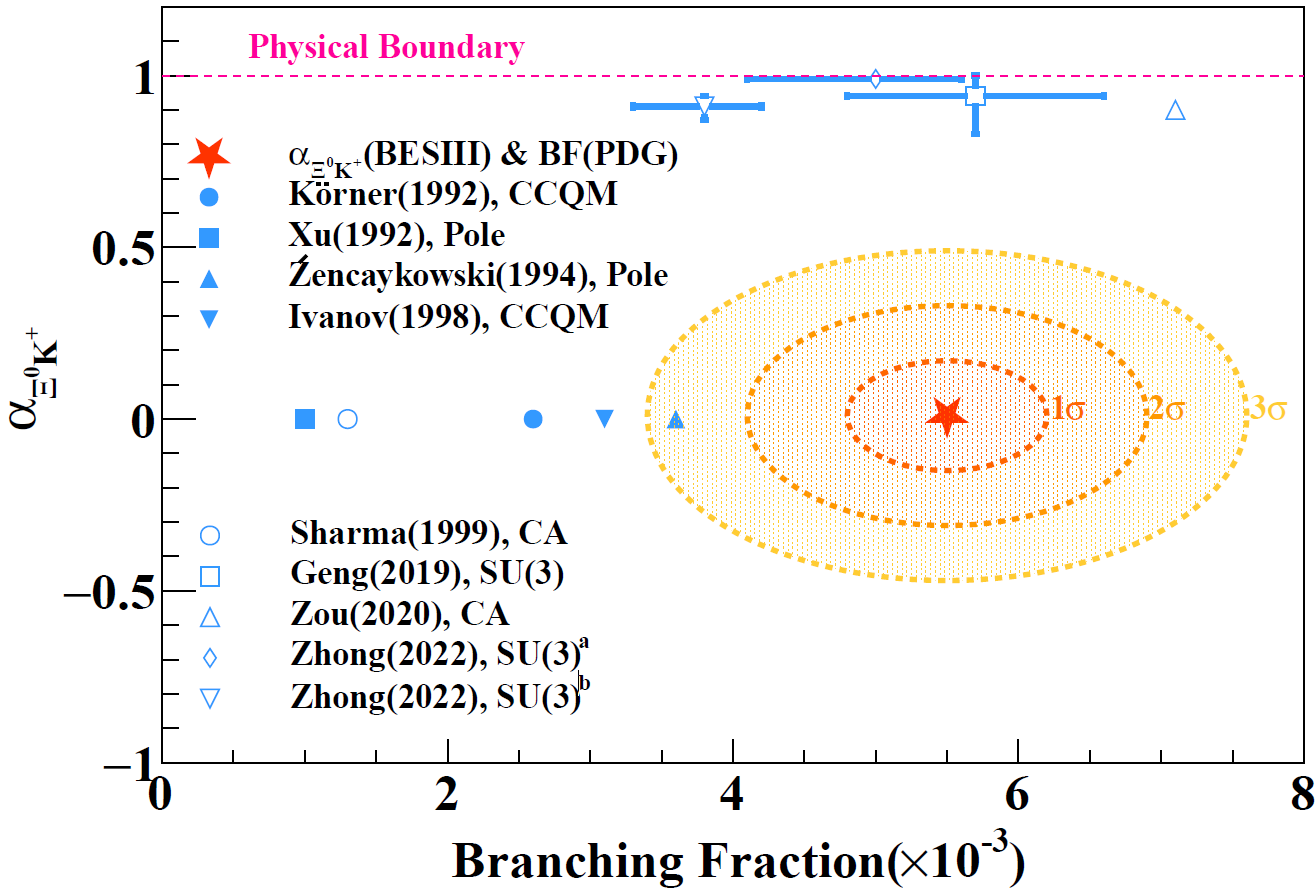In the January 17, 2024 issue of Physical Review Letters(Phys. Rev. Lett. 132, (2024) 031801), the BESIII Collaboration reported the first measurement of the decay asymmetry in the pure W-boson-exchange decay Λ
c+→Ξ
0 K
+. The decay asymmetry parameter, α, is measured to be 0.01±0.16 (stat.)±0.03(syst.), and Δ is measured to be 3.84±0.90 (stat.)±0.17(syst.). Meanwhile, the other two decay asymmetry parameters, β and γ, and also dynamics parameters are also derived in this process.
Investigations into the dynamics of decay in charmed baryons play a pivotal role in comprehending the fundamental interaction outlined in the Standard Model (SM) of particle physics. The unveiling of Λ
c+ in 1979 marked the commencement of extensive inquiries into the characteristics of charmed baryons, including investigations into decay branching fractions and decay asymmetries. However, understanding their decay dynamics remains limited due to experimental precision constraints and challenges in handling strong interaction theoretically. Unlike the decay of heavy mesons, the decay processes of charmed baryons involve nonfactorizable contributions stemming from W-boson-exchange diagrams. For instance, the decay Λ
c+→Ξ
0 K
+ occurs exclusively through a W-boson-exchange mechanism, offering a unique avenue to explore internal dynamics and probe charge-parity (CP) violation within baryons. The branching fraction of Λ
c+→Ξ
0 K
+ reported by BESIII collaboration in 2018 sparked theoretical interest. Modifications in theoretical approaches, such as variations of the current algebra (CA) approach and SU(3) symmetry calculations, aimed to describe experiment results better. Nevertheless, debates on these theoretical constructions persist. Large discrepancy between different predictions on the weak decay asymmetries parameters highlight the importance of experimental measurement.
The decay asymmetry parameters α, β, and γ are defined in terms of the S-wave (parity violating) and P-wave (parity conserving) amplitudes’ contributions. Only two of them are independent. Based on the e+e- annihilation dataset, comprising an integrated luminosity of 4.4 fb-1, collected at center-of-mass energies ranging between 4.600 and 4.699 GeV, BESIII measured the decay asymmetry parameters, α, β, and γ firstly in the world. With the branching fraction of this channel, the weak interaction dynamic parameters, including the S-wave amplitude parameter (|A|), P-wave amplitude parameter (|B|), and the phase shift between the two waves (δp-δs) are further derived.
Figure1. The comparison between experimental measurement and theoretical predictions.
One can noticed that none of the models were capable of consistently describing both the experimental results as shown in the above Figure. The reason is that none of the models accounted for the phase shift between two partial waves. The decay asymmetry parameter α is proportional to cos(δ
p-δ
s), and the BESIII result show cos(δ
p-δ
s) is close to zero. This study addressed the long-standing inconsistency between theoretical predictions and experimental measurements of the pure W-boson-exchange decay Λ
c+→Ξ
0 K
+ and elaborated the significant role of phase shift in charmed baryon decays.
URL:
https://link.aps.org/doi/10.1103/PhysRevLett.132.031801DOI: 10.1103/PhysRevLett.132.031801


